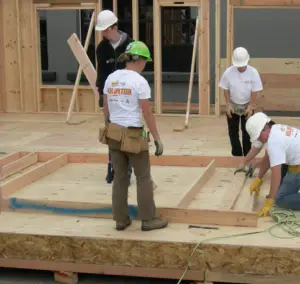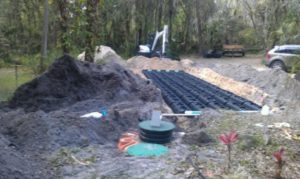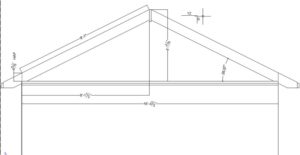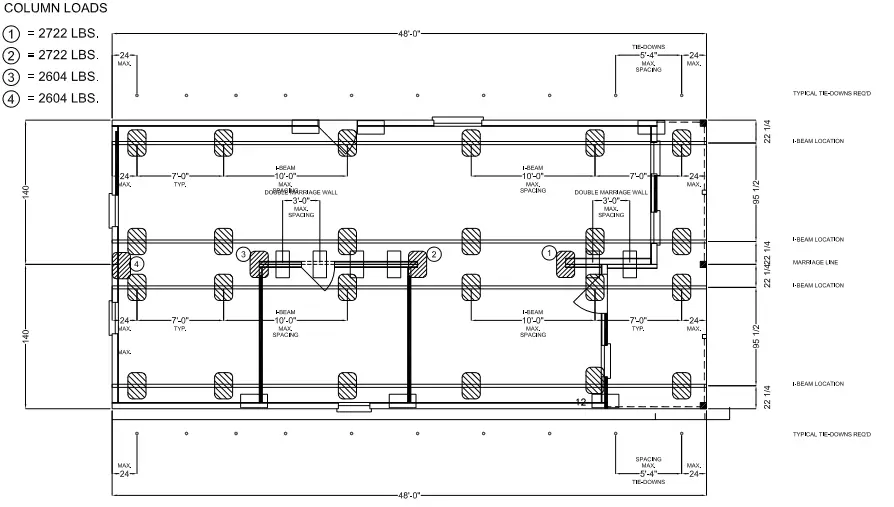This was posted by Rob

Before you get into the meat and potatoes, please understand that mobile homes in particular but also most structures that are built on on soil , fill dirt, sand and clay will settle over time. This is entirely normal and in no way a bad reflection of the contractors work.
How much a structure will settle and how fast it will become unlevel will depend on the load bearing capacity of the ground under the home, the weight if the structure and the footprint of the supports.
When it comes to mobile homes it is the size and number of the pads / pier supports being used. All other things being equal the more piers the harder the ground and the bigger the pads the better. It is common sense that a heavy home will need more support especially on loose ground.
The State of Florida has addressed these issues in their new home installation standards Rule Chapter 15C-1 where they insist on soil tests and load bearing charts as part of the set up procedure for used homes in Florida. These rules do not actually apply to the re leveling of homes but most contractors will apply the rules as much as possible.

Below is an article about leveling a mobile home it contains all of the steps, tools and tips that you will need do do a good job. Take your time, be safe and get a professional if you have any doubts about your capacity to complete the job.
What you will learn :
- What to look for, signs your home is out of level.
- Should I hire a contractor?
- How to use a water level, detailed instructions.
- How to level your home DIY instructions.
- Summary
So lets begin:
There are many reasons to level your home, some are more obvious than others.
The more obvious signs of needing to relevel a trailer would be:
- Visual signs of leaning.
- Doors that stick or swing in one direction.
- Windows that won’t open or close properly.
- Cracks in the ceiling or wall joints.
- Problems with awnings and attachments.
Sometimes you just have a feeling that things are not level when you move around your home, it just doesn’t look or feel right. Some homeowners are acutely aware of the problem while others find out after playing ball with the kids and notice the strange roll to one side of the home.
Most of these issues will be resolved once you home is level.
Should I hire a contractor or Do it myself?
This is not a job that needs to be performed on a regular basis and so learning the necessary skills would not be productive use of a handy mans time or resources. Leveling a home is a task best left to an expert contractor for a number of reasons. Secondly some of the tools required are expensive and would not get the amount of use required to justify the initial cost.
Last but not least are the safety considerations of inexperienced workers tackling strange jobs on structures that can weigh in excess of 10 tons. There are some obvious safety issues involved
A local set up company can usually re level a mobile home in one day at a reasonable cost with little disruption of family life.
How Much will it Cost to Level my 76′ Palm Harbor Doublewide Home?
In my particular area the cost to level a mobile home starts at around $650. This is for a double wide and usually includes materials and labor. Singlewide homes are usually a little less but the costs for the crew, the truck and time make it impossible to level a home for some of the projects and still earn money for the contractor.
If the particular job involves the addition of more frame piers or center supports then the cost will start to rise by up to $30 dollars per pier installed including materials and labor.
If you decide to do this job yourself you will need to know how to use a water level.
In most situations the best type of level to use is a water level.

This is often the case when the distance between the two objects being leveled is considerable or intervening obstacles prevent the efficient use of a laser level.
One particular instance where this is the case is when the supporting piers are my home are being set to the same level. Sometimes these piers can be a considerable distance apart, on an 80 foot long double wide home the long diagonal distance is over 90 feet. There is no clear path underneath the home that would allow the use of a laser level, air conditioning ducts, plumbing pipes, I beams and other piers would obstruct the beam.
Despite the fact that a water level is a manual device it remains fairly accurate over this type of distance, even using the human eye it is still possible to be accurate to 1/8 of an inch.
There are of course some things to watch out for, in particular water bubbles in the line which will effect the accuracy.
The basic setup is a container of water and a length of plastic hose. One end of the hose should be submerged in the container of water, the hose is then filled with water by sucking on the other end keeping the tube below the level of the water in the container.
The level of the water in the container and at the other end of the hose should be equal, this can be tested by placing one against the other.
The water container is set to the desired height and remains stationary while the tube end is moved around the job site to the various positions that need to be leveled . The far end of the hose needs to be made of a material that is clear and will allow you to see the level of the water.
If you’re working underneath a mobile home attach a magnet to the end of the hose so that it will stick to the steel I-beam allowing you to keep both hands free. This will make working and moving around easier and stop water leaking from the tube. Keep the open end of the tube ABOVE the level of the water in the container at all times.
There are a few things that will affect the accuracy of your level:
- Excessive cold weather will freeze the water in the line.
- Excessive heat sometimes causes bubbles to form in the line.
- Kinking of the tube will stop the free movement of the water.
- Care must be taken not to get the tube trapped under heavy objects.
How to level your Mobile Home DIY instructions for the home owner.
The purpose of this article is to explain to you how to level a mobile home. If you’re reading this it is most likely that you already know that you have an issue with your home. To some degree all homes will settle slightly over time and depending upon the condition and stability of the ground on your lot you may have a small or large leveling issue.
These instructions are relevant for mobile homes or modular homes built on pier foundations, where concrete blocks are loosely stacked on a concrete or ABS base pad with wooden shims and wedges. For the purpose of these instructions I will assume that the mobile home stands on its own and is not attached to any other structures including sun rooms, porches, garages or covered areas.
It is also assumed that sufficient sections of your mobile home skirting have been removed to allow you easy access and sufficient light to carry out the job.
Usually, the home will be sinking into the ground but it is unlikely that all areas of the home will sink at the same rate, and when I say sinking I’m only talking about a small amount of movement. Even if your mobile home has only dipped 1 inch in a corner it could still be noticeable as you move around the house.
It goes without saying that a mobile home is a heavy structure often weighing several tons.
These jobs are best left to professional crews who fully understand the dangers involved and have the necessary skill and equipment to carry out these procedures. However, if you take your time and follow the instructions there is no reason why a homeowner cannot successfully level their home. However, if possible try to work with another person who can pass you the materials and keep an eye on the home for safety reasons
Basic Construction Tools required For the Leveling of Your Home:
- One water level.
- One torpedo level.
- Flashlight.
- 12 ton bottle Jack.
- Hammer.
Materials Needed For a Re-level DIY (do it yourself) Project :
- Pairs of pressure treated Wooden wedges.
- 10 pieces of 2″ x 8″ x 16″ pressure treated wood.
- 5 pieces of 1″ x 8″ x 16″ pressure treated wood.
- 8″ x 8″ x 16″ concrete blocks. (To replace cracked or broken blocks)
Procedure:
Set up your water level to the approximate height of your mobile home piers, then take one end of the water level underneath the home. Check the height of each pier and mark on it how far above or below the line on the water level it stands. Using this method you will be able to determine which pier or group of piers is the highest. Take note of this pier, mark it and set the water level to its height. The idea here is to bring all of the other piers up to the height of the highest one. The only time I wouldn’t use this procedure would be if for some reason the height of this one pier is abnormally high in comparison to all of the others.
Next set your water level to match the height of the highest pier which was identified in the previous paragraph.
You’re now going adjust the wedges on top of each pile of block until each pier matches the highest point.
- Using the 12 ton bottle jack raise the I beam to the correct height.
- Adjust the wedges accordingly.
- Work your way down one beam at a time.
- Do not lift the I beam any higher than necessary to adjust the height.
- Replace any broken or cracked blocks as you go through the procedure.
- Level the base pads as required.
Take your time and finish off each section before moving to the next.
If you decide to use a Licensed Contractor.
When you speak to a contractor make sure that you explain your concerns and that both of you agree on what you will get and how much it will cost. Be as detailed as possible and don’t make assumptions.
Most importantly write it down, so that both parties have a point of reference to go back to if there is a disagreement..
When the job is completed ask the contractor to show you what has been done to your home.
To have your home leveled by our experienced crew call 863 808-2200
Originally posted 2014-03-26 13:29:41.
The post How to Level My Mobile Home, Full Water Level Instructions for Home Owners. appeared first on Level My Mobile Home.
source
http://levelmymobilehome.com/how-to-level-my-mobile-home/













